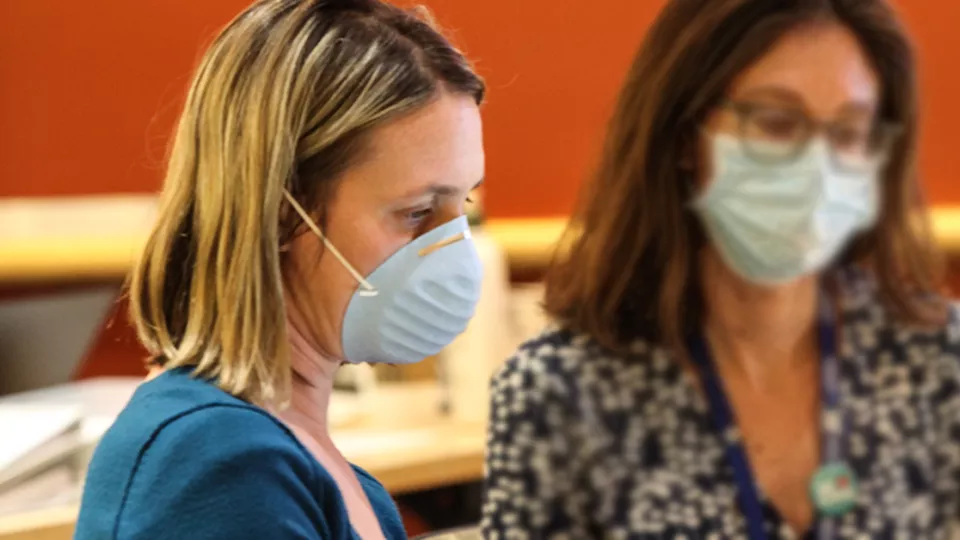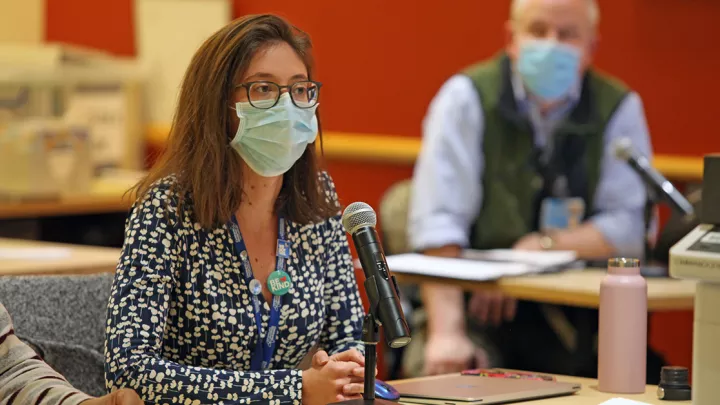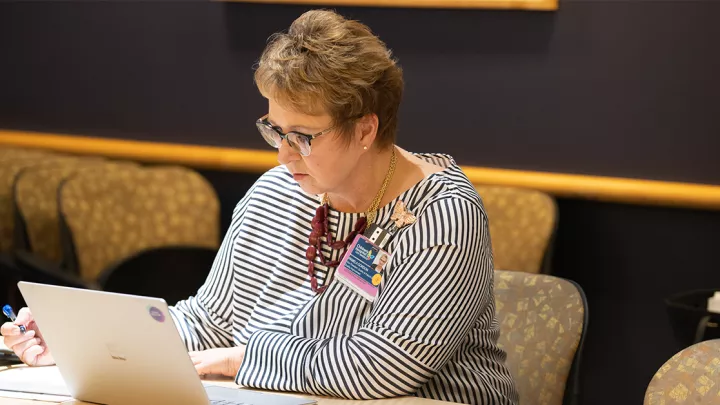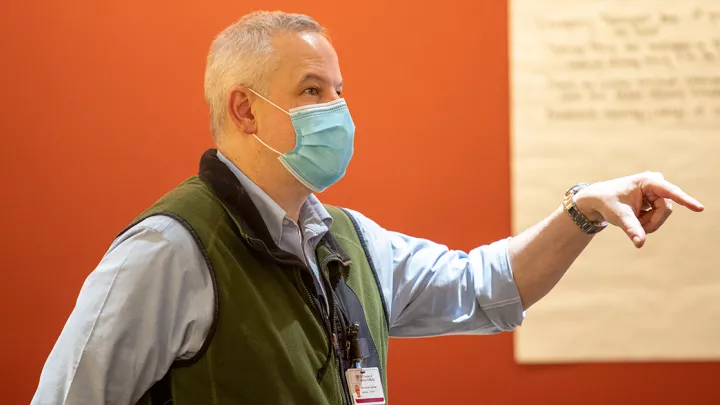
Preparing for a Pandemic
Katie Meyer, MSN, RN, PHN, CCRN, NHDP-BC, has never run away from a crisis. In fact, she’s typically in the center of it.
Growing up in Southern California, she remembers the devastating aftermath of the L.A. riots and the Northridge earthquake. A few years later, she flew to Venezuela to provide aid after a quake shook its capital, and then traveled to Uganda to help children orphaned by the HIV epidemic.
“I’ve always known I wanted to work with kids,” says Meyer, “but more than rebuilding homes and doing immediate relief work, I realized what kids really need is clinical care. So I decided to become a nurse.”
Meyer enrolled in nursing school and began working at Children’s Hospital Los Angeles as a patient care aid in 2000. The two decades she’s been with the institution have been marked by several unforgettable moments. There was the accident at a local elementary school—the same one she attended as a child—where an elderly driver accidentally ran into 13 students, who were transported to CHLA’s Emergency Department. Then there was the H1N1 epidemic in 2009 that put the hospital on heightened alert to protect its patients.
All her past experiences helped prepare Meyer for the role she commands today: serving as manager of the hospital’s Disaster Resource Center.
‘Tough decisions’
Only 13 of the 100 hospitals in Los Angeles County are designated as a disaster resource center. CHLA is one of them—and the only one devoted exclusively to pediatrics—equipped with select staff, extra training and specialized equipment to respond to large-scale emergencies.
On any given day, Meyer could be meeting with county public health officials to create plans for a host of emergencies. Other times, she’ sat hospitals throughout the region to provide disaster preparedness education. She also coordinates drills to prepare team members for different scenarios, and is responsible for procuring and maintaining a cache of crucial medical supplies, such as gloves and masks—perhaps one of her most significant responsibilities during the COVID-19 pandemic.
“We started conserving PPE [personal protective equipment] around January,” Meyer says. “It was kind of a gamble because other hospitals weren’t really doing this yet, but having gone through the H1N1 ordeal, we had to make some tough decisions. Thankfully, these efforts paid off. We’re not experiencing the shortages that many other hospitals are facing.”
Fighting a ‘slow burn’
Meyer is normally behind the scenes at CHLA. “If you know what we’re doing or we somehow end up on the news, it means I’m doing my job wrong,” she says with a laugh.
But the unprecedented nature of the novel coronavirus has turned everything upside down. Meyer is now on the front lines helping to plan the hospital’s response to the outbreak in real time. She begins every morning convening at CHLA’s Command Center, which focuses on keeping all hospital operations running smoothly. Around 11 a.m., she has a call with the county’s Emergency Medical Services agency to provide an update on CHLA’s capacity and inventory, which allows officials to distribute supplies accordingly. A large portion of Meyer’s day is spent chasing down this information from all corners of the hospital for nine assessments that must be submitted to the state and county every day.
As California was anticipating a surge in COVID-19 cases, Meyer was clocking in 14-hour days for more than a week. Fighting a disaster that felt like a “slow burn” because of its prolonged uncertainty started to take a toll.
“I felt the world was on my shoulders,” Meyer admits. “I had to offload some of it, and I think the true test of teamwork is when you can depend on your colleagues. This is not your everyday, run-of-the-mill emergency. In the CHLA Command Center, we have materials management, environmental services, surgeons, nurses, researchers, quality control, just everyone working together on the same problem. I don’t know when we’ve ever had this level of collaboration before.
Fulfilling her mission
The hospital-wide partnership has yielded exceptional results. “We’re at the top of the game when it comes to COVID-19 testing and getting results fast, and also PPE conservation,” says Meyer.
These days, when Meyer gets home at the end of each day, she cherishes downtime with her three young sons and husband, playing plenty of board games and watching uplifting movies. As someone who has always been on the go, she says she’s had to “learn a new definition of self-care.” That, in return, re-energizes her to accomplish what she’s always set out to do: help kids in need.
“I’ve had a chance to talk to some of our patient families. Knowing they are still able to get everything they need, that their child is being taken care of in a non-compromising way despite everything that’s going on,” she says, “makes me proud to work here.”


